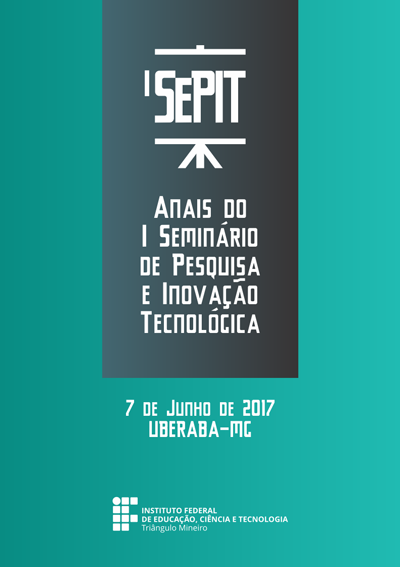AUTÔMATOS CELULARES COM BORDA PSEUDOALEATÓRIA APLICADOS À CIFRAGEM DE IMAGENS DIGITAIS
Resumo
RESUMO: Tendo em vista o crescimento tecnológico a partir do século XX, diversas tecnologias e meios de comunicação foram criados, o acesso a informação nunca foi tão simples. Devido a isso, podemos nos comunicar através de textos, imagens, áudios com pessoas que estejam do outro lado do mundo instantaneamente. Com isso é necessário obter uma forte segurança dessa comunicação, uma vez que dependendo do conteúdo da informação, poderá trazer prejuízos a um indivíduo ou a um grupo. Os algoritmos de criptografia de dados foram essenciais para a segurança, a criptografia em si é utilizada pela humanidade desde tempos remotos. Tratando-se de criptografia de imagem é sempre necessário que seja rápida, segura e de baixo custo de processamento. Os autômatos celulares têm grande aplicabilidade em criptografia, uma vez que são sistemas dinâmicos emergentes e são associados à teoria do caos, propriedades adequadas a bons sistemas criptográficos. Este trabalho tem como objetivo otimizar o algoritmo de criptografia Border Chaotic Cellular Automata (BCCA) a fim de obter resultados mais satisfatórios através da aplicação de uma borda pseudoaleatória gerada por uma regra caótica de autômatos celulares.Referências
DAEMEN, J.; RIJMEN, V. Rijndael/aes. In: Encyclopedia of Cryptography and Security. Springer US, 2005. p. 520-524.
FELICIANI, C.; NISHINARI, K. An improved Cellular Automata model to simulate the behavior of high density crowd and validation by experimental data. Physica A: Statistical Mechanics and its Applications, v. 451, p. 135-148, 2016.
FERREIRA, G. B. S; VARGAS, P. A.; OLIVEIRA, G. M. B. An improved cellular automata-based model for robot path-planning. In: Conference Towards Autonomous Robotic Systems. Springer International Publishing, 2014. p. 25-36.
GUTOWITZ, H. (1995). Cryptography with dynamical systems. Kluwer Academic Press.
LI, W. Parameterizations of cellular automata rule space. Santa Fe Institute TR, 1991.
LIMA, D. A. Modelo criptográfico baseado em autômatos celulares tridimensionais híbridos. 2012. 224 f. Dissertação (Mestrado) - Curso de Mestrado em Ciência da Computação, Faculdade de Computação FACOM, Universidade Federal de Uberlândia, Uberlândia, 2012.
LIMA, D. A.; OLIVEIRA, G. M. B. A cellular automata ant memory model of foraging in a swarm of robots. Applied Mathematical Modelling, v. 47, p. 551-572, 2017.
LIMA, H. A.; LIMA, D. A. Autômatos celulares estocásticos bidimensionais aplicados a simulação de propagação de incêndios em florestas homogêneas. In: Workshop of Applied Computing for the Management of the Environment and Natural Resources. 2014.
LIMA, M. J. L. (2005); Criptografia baseado no cálculo genérico de pré-imagens de autômatos celulares. Master’s thesis, Universidade Presbiteriana Mackenzie.
OLIVEIRA, G. M., Martins, L. G., Alt, L. S., and Ferreira, G. B. (2010). Exhaustive evaluation of radius 2 toggle rules for a variable-length cryptographic cellular automata-based model. In Cellular Automata, pages 275–286. Springer.
OLIVEIRA, G. M. B., COELHO, A., and MONTEIRO, L. (2004). Cellular automata cryptographic model based on bi-directional toggles rules. Int. J. of Modern Physics C.
SILVA, E. C.; SOARES, J. A. J. P.; LIMA, D. A. Autômatos celulares unidimensionais caóticos com borda fixa aplicados à modelagem de um sistema criptográfico para imagens digitais. Revista de Informática Teórica e Aplicada, v. 23, n. 1, p. 250-276, 2016.
STINSON, D. (2006). Cryptography: Theory and Practice. Chapman & Hall/CRC, 3rd edition.
VASANTHA, S.; SHIVAKUMAR, N.; RAO, D. S. A new encryption and decryption algorithm for block cipher using cellular automata rules. International Journal, v. 130, 2015.
WOLFRAM, S. (2002). A New Kind of Science. Wolfram Media - (1st edition): 1197 2006-09-19T07:35:05.000+0200.
YANG, Y. S. et al. Parallel and pipeline processing for block cipher algorithms on a network-on-chip. In: Information Technology: New Generations, 2009. ITNG'09. Sixth International Conference on. IEEE, 2009. p. 849-854.
ZEGHID, M. et al. A modified AES based algorithm for image encryption. International Journal of Computer Science and Engineering, v. 1, n. 1, p. 70-75, 2007.


